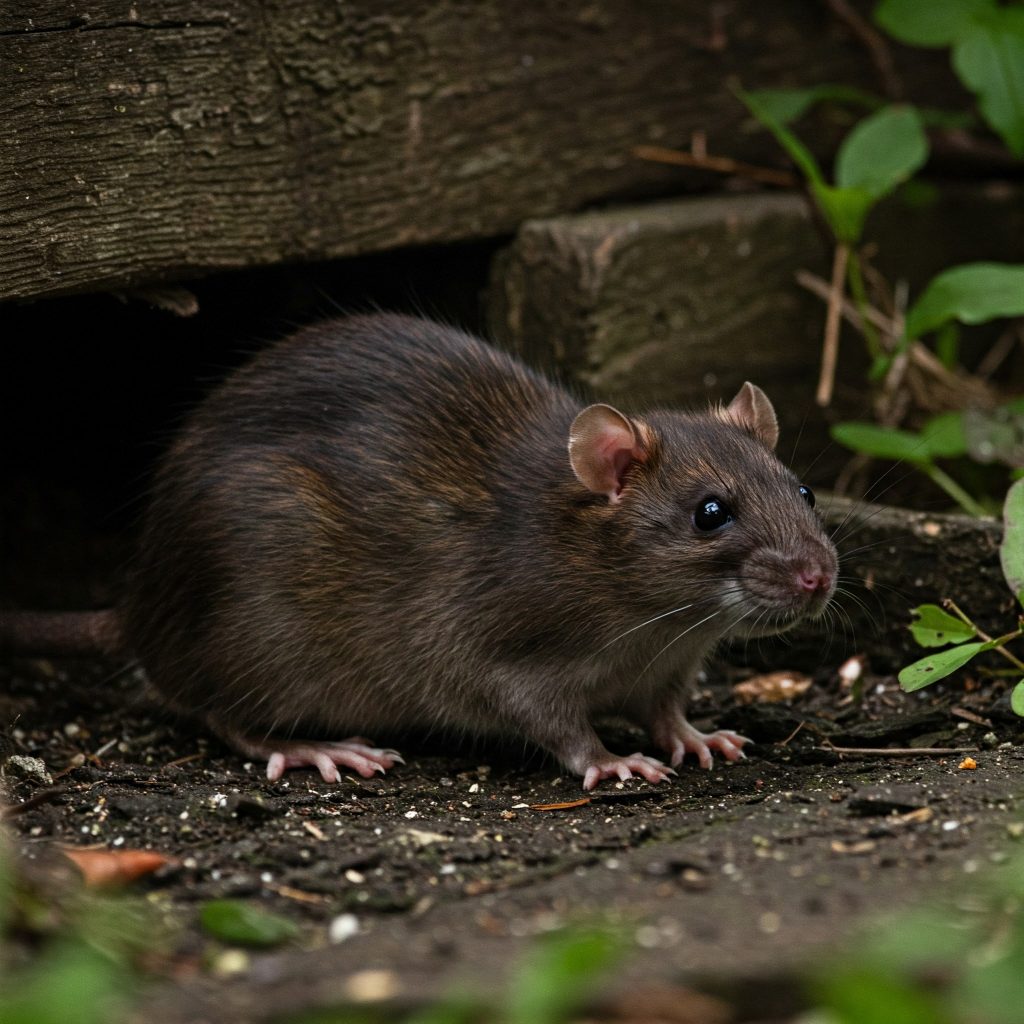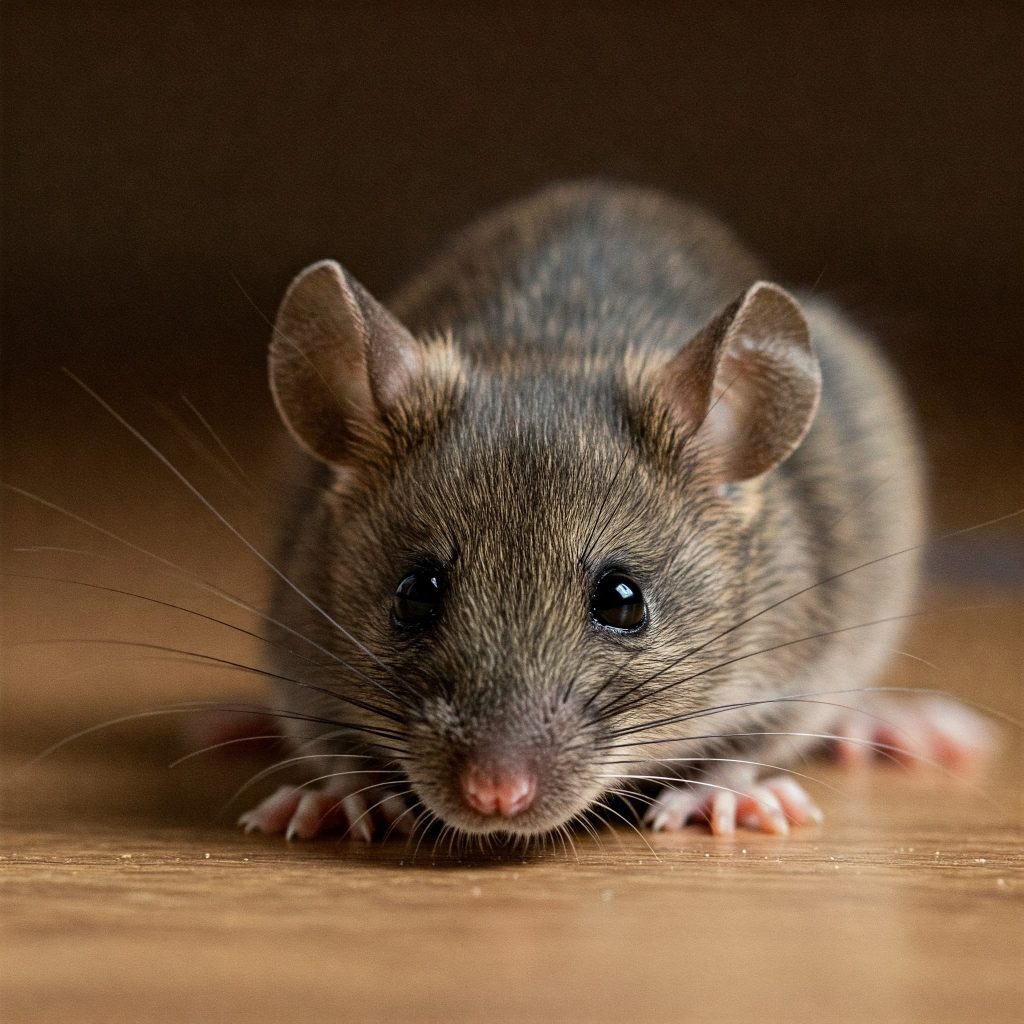RODENTS
Rodents are pests because of the damage they cause to food and property, and because of the many serious diseases associated with them.
They have a major role in the spread of diseases such as salmonellosis, ricketsial pox and lymphatic choriomeningitis. Contamination of human food and animal feed with rodent droppings and urine is also a health concern. Parasites such as fleas and mites that are associated with rodents can also attack humans resulting in disease transmission. Recent health concerns have also been seen with the White-footed mouse which acts as a reservoir for the Lyme disease bacterial spirochaete and the Hanta virus. Also rodents can gnaw through electrical cables resulting in structural fires.
Having problems with Rodents?

Norway Rat
The young are born blind following a gestation period of between 20 to 25 days.
Litters range from two to twenty-two young, with five to twelve being common.
The eyes open on about the 14th day and the rat travels freely after one month.
The Norway rat reaches sexual maturity at three months. Females usually produce four to seven litters per year. Rats have minimal control of their bladder and cannot vomit (any rodenticide they swallow cannot be voided from the stomach). Length of life in wild conditions is about one year.
Normally, the Norway rat lives at or near ground level. It nests and burrows in the ground, under buildings, in rubbish and rubble, and under lumber and litter of various types. It is an excellent climber, swimmer and jumper, and is found everywhere. Dumps and sewers are major habitats. It can consume 30-90 grams of food per day. A rat will often take food (or even rodenticide bait) and hoard it in a hiding place for consumption at a later time, if the rat can find it again. They damage more food through contamination with their urine and droppings (16 cc of urine and 30-180 droppings per day are excreted) than by consumption.
The Norway rat will live both inside and outside buildings but has a home range of 15-30 metres. The dominant male rat in the area is considered to be the alpha rat and will have several female rats in his territory. A rat is essentially a nocturnal animal, although sometimes it is active during the day. It prefers narrow, concealed, out-of-the-way routes when moving about. Since it is a creature of habit, it tends to follow the same pathways; however, it is highly adaptable.

House Mouse
The House mouse reaches maturity near six weeks and has a life span of about one year. Within her lifetime, a female may bear as many as 8 litters of 5 or 6 young if food and shelter are plentiful.
In the summer months, the House mouse may live outdoors burrowing for shelter in concealed areas close to buildings, sidewalks or in underbrush. As cooler weather approaches, however, the House mouse prefers to seek shelter in buildings. Mice may be found anywhere from the basement to the attic. For nesting sites, they use the space between double walls, floor joists, and concealed, enclosed spaces in cupboards or under counters. Generally, the nest is about 12 cm in diameter, completely covered, with a small entrance hole in one side. This nest is constructed from soft material such as paper or cloth which the mouse has shredded.
Although the House mouse will eat any food which is available, it prefers cereal grains and seeds. The House mouse is a nibbler, eating erratically. It requires little water and only about 3 grams of dry food each day. In its search for food, the House mouse travels in a limited range of approximately a 12 metre circle, or within one or two rooms of the house. The dominant male will have several females in his territory.
As with all rodents, the House mouse will gnaw its front top and bottom incisors together to keep the front teeth sharp. It is able to gnaw through wood, aluminum, soft mortar, and asphalt. Also, the House mouse can jump a vertical distance of up to 30 cm, can pass through holes up to 12 mm in diameter, and climb wall studs or other vertical surfaces. With all of these abilities, the House mouse can make or discover entrances to buildings. Since the House mouse is a nocturnal animal, it has well developed hearing and touch receptors to alert it in its night-time activities. It will frequently investigate new objects put into its territory.

Squirrel
Squirrels can create a fire hazard by introducing combustible materials in the form of nesting materials into dwellings. When seeking nest sites in a building they often enter through chimney vents, cellar windows or by gnawing their way through soft materials such as wood or plastic. Like rats or mice, squirrels can also carry parasites such as fleas, mites and ticks. Squirrels are also capable of inflicting a painful bite. Any bite should be checked by a medical doctor even though rabies is not common in squirrels.
Squirrels can be a nuisance to gardeners, causing minor damage to gardens when they dig up bulbs and vegetables, clip flower buds, and strip bark from trees to feed on the inner layers. Although squirrels will consume anything of food value, pine cones, nuts and fruits are their favourite food. They often tend to gather more food for winter than they will consume. Squirrels play a role as a reforestation agent because of their habit of burying nuts.